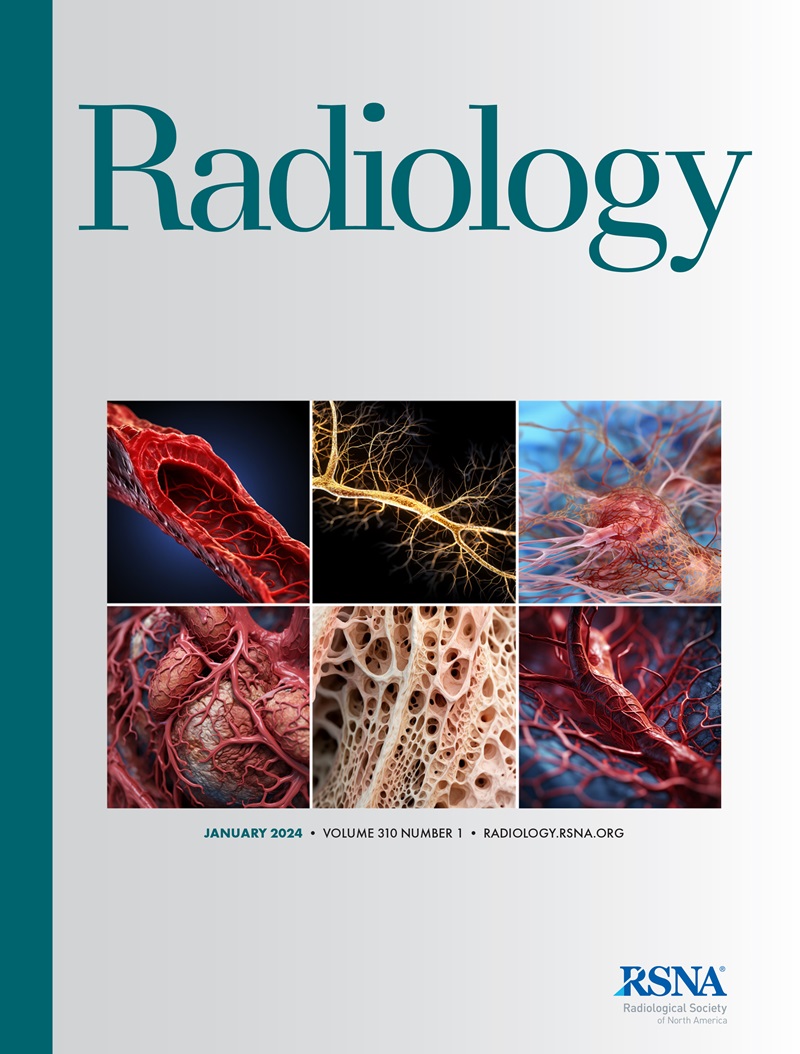求助PDF
{"title":"放大研究:播客提高放射学期刊论文曝光率的潜力》。","authors":"Mark Wang, Thuy Le, David A Leswick","doi":"10.1148/radiol.233057","DOIUrl":null,"url":null,"abstract":"<p><p>Background Podcasts have become an increasingly popular method of communicating information in medicine, including in radiology. However, the effect of podcasts on the reach of journal articles remains unclear. Purpose To evaluate the influence of <i>Radiology</i> podcasts on the performance metrics, including downloads, citations, and Altmetric Attention Score (AAS), of <i>Radiology</i> articles. Materials and Methods This was a retrospective study. All articles published in the print version of <i>Radiology</i> from January 2021 to December 2022 were reviewed; editorials and case reports were excluded. Articles featured on <i>Radiology</i> podcasts were included in the podcast group. Articles published within the same journal issue and category were the nonpodcast group. Downloads, Google Scholar citations, Dimensions citations, and AAS metrics were recorded. The Mann-Whitney <i>U</i> test was used to compare medians and evaluate differences between older and more recently published articles. Results The podcast group, composed of 88 articles, exhibited significantly higher median values for downloads (PG, 4521.0; nonpodcast group, 2123.0; <i>P</i> < .001), Google Scholar citations (podcast group, 14.5; nonpodcast group, 10.0; <i>P</i> = .01), Dimensions citations (podcast group, 12.0; nonpodcast group, 9.0; <i>P</i> = .01), and AAS (podcast group, 43.0; nonpodcast group, 10.0; <i>P</i> < .001) compared with the nonpodcast group of 378 articles. Within both groups, articles published in the earlier nonpodcast group (January to June 2021) had higher downloads (podcast group, <i>P</i> = .08; nonpodcast group, <i>P</i> < .001), Google Scholar citations (podcast group and nonpodcast group, <i>P</i> < .001), and Dimension citations (podcast group and nonpodcast group, <i>P</i> < .001) than articles from the later period (July to December 2022). AAS markedly increased in recent podcast articles (<i>P</i> = .03), but AAS for nonpodcast articles significantly decreased over time (<i>P</i> = .01). Conclusion <i>Radiology</i> articles featured on the <i>Radiology</i> podcast had greater median metrics, including downloads, Google Scholar citations, Dimensions citations, and AAS, compared with nonpodcast articles, suggesting that podcasts can be an effective method of disseminating and amplifying research within the field of radiology. © RSNA, 2024 See also the editorial by Chu and Nicola in this issue.</p>","PeriodicalId":20896,"journal":{"name":"Radiology","volume":null,"pages":null},"PeriodicalIF":12.1000,"publicationDate":"2024-09-01","publicationTypes":"Journal Article","fieldsOfStudy":null,"isOpenAccess":false,"openAccessPdf":"","citationCount":"0","resultStr":"{\"title\":\"Amplifying Research: The Potential for Podcasts to Boost <i>Radiology</i> Journal Article Exposure.\",\"authors\":\"Mark Wang, Thuy Le, David A Leswick\",\"doi\":\"10.1148/radiol.233057\",\"DOIUrl\":null,\"url\":null,\"abstract\":\"<p><p>Background Podcasts have become an increasingly popular method of communicating information in medicine, including in radiology. However, the effect of podcasts on the reach of journal articles remains unclear. Purpose To evaluate the influence of <i>Radiology</i> podcasts on the performance metrics, including downloads, citations, and Altmetric Attention Score (AAS), of <i>Radiology</i> articles. Materials and Methods This was a retrospective study. All articles published in the print version of <i>Radiology</i> from January 2021 to December 2022 were reviewed; editorials and case reports were excluded. Articles featured on <i>Radiology</i> podcasts were included in the podcast group. Articles published within the same journal issue and category were the nonpodcast group. Downloads, Google Scholar citations, Dimensions citations, and AAS metrics were recorded. The Mann-Whitney <i>U</i> test was used to compare medians and evaluate differences between older and more recently published articles. Results The podcast group, composed of 88 articles, exhibited significantly higher median values for downloads (PG, 4521.0; nonpodcast group, 2123.0; <i>P</i> < .001), Google Scholar citations (podcast group, 14.5; nonpodcast group, 10.0; <i>P</i> = .01), Dimensions citations (podcast group, 12.0; nonpodcast group, 9.0; <i>P</i> = .01), and AAS (podcast group, 43.0; nonpodcast group, 10.0; <i>P</i> < .001) compared with the nonpodcast group of 378 articles. Within both groups, articles published in the earlier nonpodcast group (January to June 2021) had higher downloads (podcast group, <i>P</i> = .08; nonpodcast group, <i>P</i> < .001), Google Scholar citations (podcast group and nonpodcast group, <i>P</i> < .001), and Dimension citations (podcast group and nonpodcast group, <i>P</i> < .001) than articles from the later period (July to December 2022). AAS markedly increased in recent podcast articles (<i>P</i> = .03), but AAS for nonpodcast articles significantly decreased over time (<i>P</i> = .01). Conclusion <i>Radiology</i> articles featured on the <i>Radiology</i> podcast had greater median metrics, including downloads, Google Scholar citations, Dimensions citations, and AAS, compared with nonpodcast articles, suggesting that podcasts can be an effective method of disseminating and amplifying research within the field of radiology. © RSNA, 2024 See also the editorial by Chu and Nicola in this issue.</p>\",\"PeriodicalId\":20896,\"journal\":{\"name\":\"Radiology\",\"volume\":null,\"pages\":null},\"PeriodicalIF\":12.1000,\"publicationDate\":\"2024-09-01\",\"publicationTypes\":\"Journal Article\",\"fieldsOfStudy\":null,\"isOpenAccess\":false,\"openAccessPdf\":\"\",\"citationCount\":\"0\",\"resultStr\":null,\"platform\":\"Semanticscholar\",\"paperid\":null,\"PeriodicalName\":\"Radiology\",\"FirstCategoryId\":\"3\",\"ListUrlMain\":\"https://doi.org/10.1148/radiol.233057\",\"RegionNum\":1,\"RegionCategory\":\"医学\",\"ArticlePicture\":[],\"TitleCN\":null,\"AbstractTextCN\":null,\"PMCID\":null,\"EPubDate\":\"\",\"PubModel\":\"\",\"JCR\":\"Q1\",\"JCRName\":\"RADIOLOGY, NUCLEAR MEDICINE & MEDICAL IMAGING\",\"Score\":null,\"Total\":0}","platform":"Semanticscholar","paperid":null,"PeriodicalName":"Radiology","FirstCategoryId":"3","ListUrlMain":"https://doi.org/10.1148/radiol.233057","RegionNum":1,"RegionCategory":"医学","ArticlePicture":[],"TitleCN":null,"AbstractTextCN":null,"PMCID":null,"EPubDate":"","PubModel":"","JCR":"Q1","JCRName":"RADIOLOGY, NUCLEAR MEDICINE & MEDICAL IMAGING","Score":null,"Total":0}
引用次数: 0
引用
批量引用


